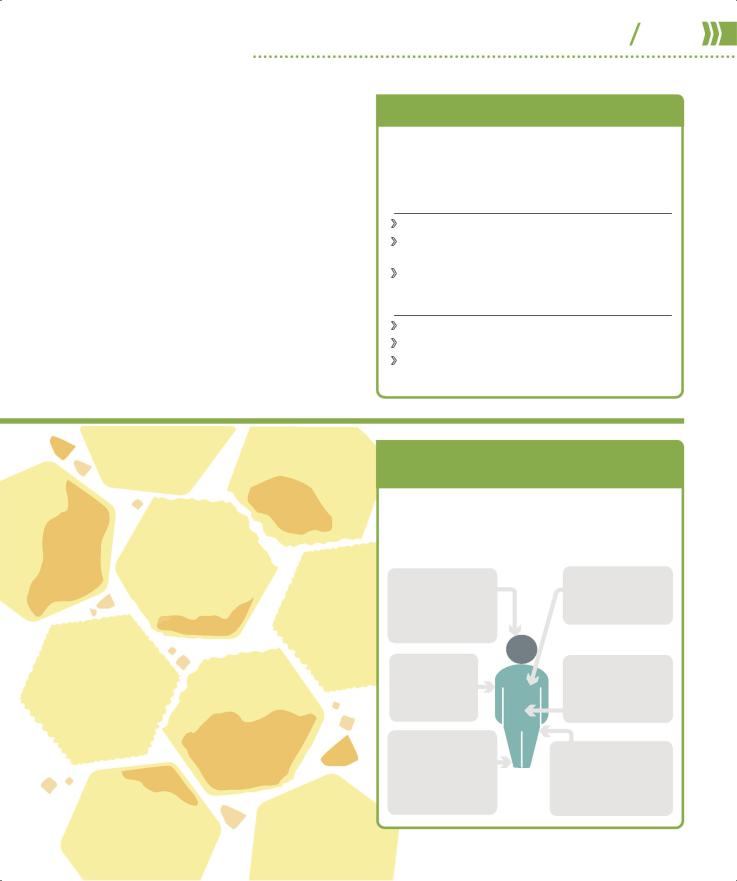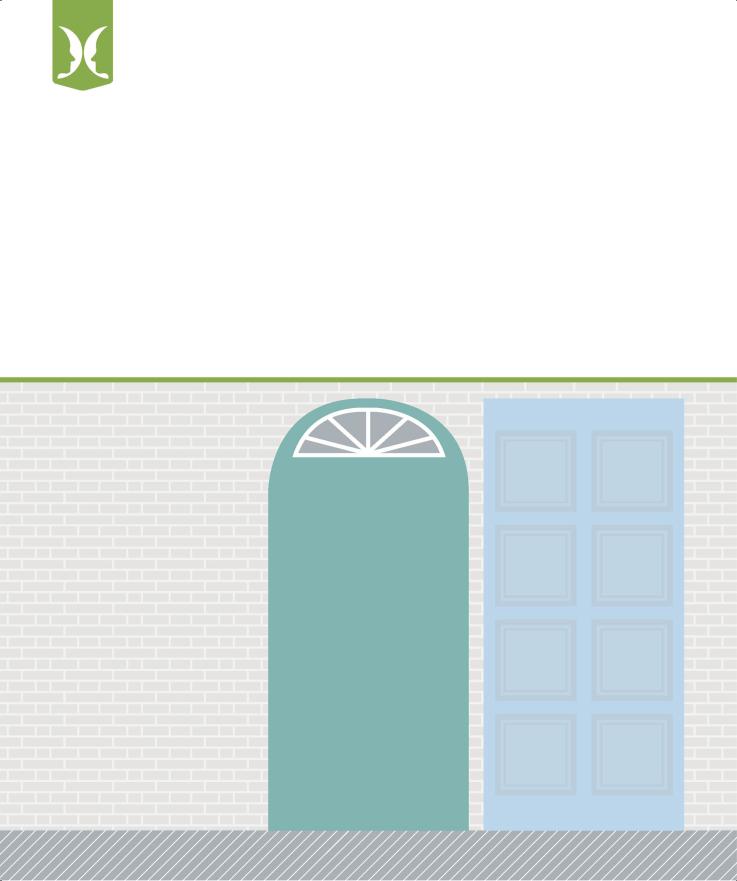
How psychology works the facts visually explained (DK) (Z-Library)
.pdf
PSYCHOLOGICAL DISORDERS |
108 109 |
Other disorders |
illnesses (such as Parkinsonism). Even though not of psychiatric origin, the impairment or distress can be severe enough to require treatment.
Some disturbances are culturally specific, such as Koro or Amok, or arise from a conflict between an individual and their society or culture. Some Western disorders have Eastern counterparts and vice versa; for instance, the Japanese condition Taijin Kyofusho is similar to social anxiety disorder (p.53).
10−20%
of Japanese people suffer from Taijin Kyofusho
POSSIBLE CAUSES |
IMPACT |
TREATMENT |
Genetics; emotional sensitivity to pain; negative personality traits; learned behaviors; problems processing emotions
Combination of psychological factors, stressful experiences, or complex or traumatic relationships in childhood
Chromosomal abnormality in which all or some cells in the body contain an extra copy of chromosome 21
Probably hormonal influences before birth and intersex conditions (reproductive anatomy not fully male or female)
Physical causes including illness, medication, and substance abuse; stress; performance anxiety; and depression
Sexual abuse or trauma in childhood; can be linked with severe personality disorders such as antisocial PD or narcissistic PD
Trauma and stress; developmental delay; digestive problems
Presence of other mental disorders; lack of psychosexual education in puberty
Geographical isolation; spiritual practices fueling a self-fulfilling prophecy
Linked with specific phobias of blushing, deformation, eye-to-eye contact, and foul body odor
Obsession with negative causes; problems with relationships; poor health; depression; distrust of medical opinion
Deception impacts social relationships; serious health-related problems from unnecessary medical interventions
Mild to moderate cognitive impairment; shortand long-term memory loss; slow acquisition of physical and language skills
Stress; depression and anxiety; self-harm; suicidal thoughts
Loss of confidence; social anxiety; low selfesteem; depression; anxiety; panic attacks
Negative effect on intimate relationships; adopting risky or illegal behaviors
Loss of social confidence; secretive behavior; isolation, bullying, and other problems at school
Deep shame; fear; secretive behavior; depression; anxiety
Long-term physical damage; social isolation; incarceration in a psychiatric institution; imprisonment
Depression; anxiety; social isolation; low self-confidence
Cognitive behavioral therapy to examine unhelpful thoughts and behaviors that maintain concern
Psychotherapy to build personal insights and find alternative ways to cope with stress and anxiety
Parent support and training, together with early intervention with techniques that support child’s development
Psychotherapy to support living in preferred gender identity; physical transitioning with surgical intervention
Specific interventions for physical problems; couple-based anxiety and stress management and sex therapy
Psychoanalysis; hypnotherapy; and behavioral therapy
Behavior programs to encourage good toilet habits; psychotherapy to help with shame, guilt, or loss of self-esteem
Psychotherapy and medication for associated depression, body dysmorphic disorder, or schizophrenia
Psychotherapy for associated mental or personality disorders; tolerance of psychosocial stressors
Cognitive behavioral therapy to help examine and reevaluate exaggerated beliefs

HEALING THERAPIES
There are as many types of therapy as there are approaches to psychology. Matching the therapy to the individual’s particular experience of a disorder is central to restoring peace of mind.


Health and therapy
Psychologists working in the area of health aim to improve the mental and associated physical health of individuals, specific groups, and the wider population. This involves devising and delivering therapies to prevent and treat mental disorders, and to promote general wellness. They also play a role in evaluating how therapies improve health and which are the most effective. This influences the way psychological treatments are delivered at both the individual and public level.
Roles of a psychologist
Whether working independently, as part of an interdisciplinary health-care team, or in a research institution, psychologists are concerned with improving mental health and general well-being. Their different roles reflect the varied ways of achieving this goal for individuals or groups.
WHO CAN PROVIDE TREATMENT?
Many mental health specialists can deliver psychological assessments, therapies, and counseling, but only some can prescribe medications to treat disorders.
Psychologists
These professionals perform psychological assessments and deliver a range of talking or behavioral therapies, depending on the needs of the individual or group.
Psychiatrists
These are medical doctors who specialize in the treatment of mental disorders. They are licensed to prescribe psychiatric drugs as part of a patient’s treatment.
General medical professionals
Doctors (GPs and hospital consultants) and advanced psychiatric nurses can prescribe drugs or other therapies.
Other mental health specialists
Social workers, psychiatric nurses, and counselors may deliver therapy alone or as part of a mental health team.
Health psychologist
What do they specialize in?
These specialists look at how people deal with illness and the psychological factors that influence their health. They
may research and deliver strategies to improve health and prevent disease, for example, promoting weight loss or stopping smoking, or may help individuals manage specific illnesses such as cancer or diabetes.
Who would benefit from their help?
Chronically ill patients needing help adjusting to a serious illness or managing pain.
Population groups needing lifestyle advice to prevent disease.
Health-care providers wanting to know how to improve their services.
Patient groups such as diabetics, who need advice to help them manage their condition.
Where would you find them?
Hospitals, community health settings, public health departments, local authorities, research institutions.
Qualifications
Doctoral level of education, followed by practical training, and continuing professional development.






